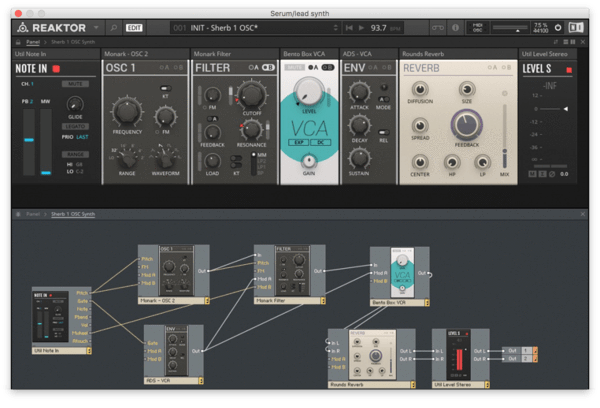

Connecting the modules is simply a case of dragging between inputs and outputs to create signal paths.Īt the Blocks and Primary levels, connector terminals can operate in one of two modes, audio or event, the latter being conceptually similar to control signals such as MIDI or CV/Gate. Terminals on the left of a module are inputs, while those on the right of a module are outputs. In order to make Reaktor’s modules do anything useful they need to be connected together in some way, which is why almost every module has at least one terminal on it.

#REAKTOR 6 TUTORIAL PDF CODE#
While Core editing looks similar to Primary editing, and Core contains many useful modules and its own library of pre-built Macros, it is in fact much more akin to writing program code due to the concepts it uses. Core modules can only be created inside of a Core Cell and allow a deeper level of control over proceedings, and complex DSP routines to be created.Īfter a Core Cell has been edited, Reaktor compiles the structure into efficient-to-run machine code. Primary also includes a built-in library of pre-defined Macros, most of which include GUI elements and so provide another quick way to assemble effects and synths.Ĭore is where you get down to the nitty-gritty of things. Some Primary modules perform very basic tasks, such as applying mathematical operations to incoming values others, such as oscillators, are more complex in their makeup and function. Reaktor’s Primary level contains all of the essential modules and tools you need to create practically any effect, processor or synth.

That standard ensures easy inter-compatibility with all other Blocks, and this allows you to quickly assemble any combination and signal flow that you like, much like working with a hardware modular system. Blocks are fully self-contained Instruments that conform to NI’s Reaktor Blocks standard. To explain Core Cells we need first to talk about Reaktor’s three editing levels: Blocks, Primary and Core. Macros are essentially just a container for other modules, and display any visual elements they contain within their parent Instrument or Ensemble’s panel. Instruments are very similar to Ensembles in that they create their own GUI panel, and define visual settings that affect any modules they contain (note that the word “Instrument” is used as in “tool” or “device”, and doesn’t imply Instrument modules are intended only for building synths).


 0 kommentar(er)
0 kommentar(er)
